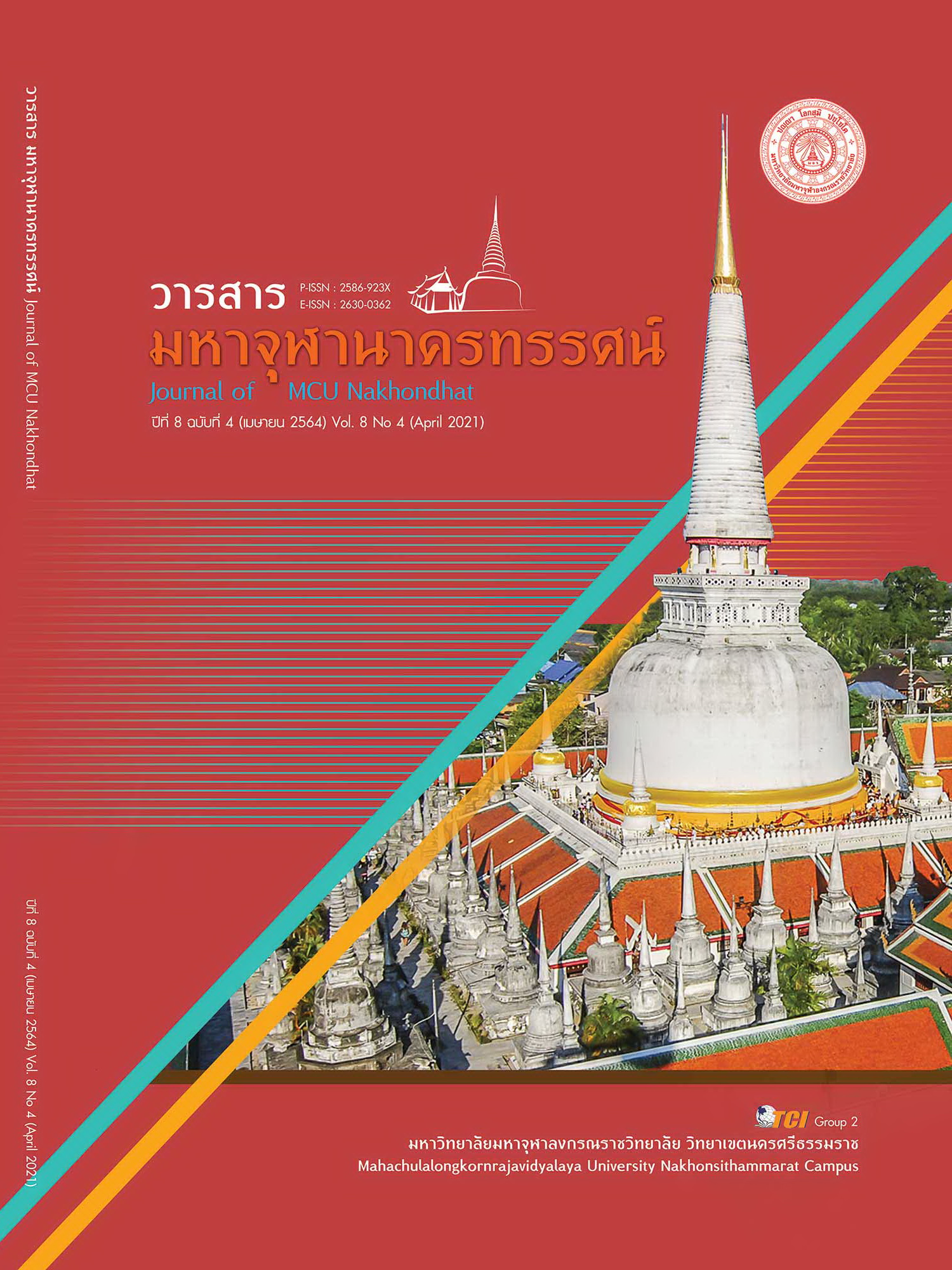COMPARISON OF ELDERLY PEOPLE EMPLOYMENT POLICY BETWEEN OVERSEAS AND THAILAND
Main Article Content
Abstract
The purpose of this academic article is to study the policy for employment of elders in Japan, Singapore, the USA, and Thailand because the problem of elderly people is a major concern and should be prompted to support for every country. It can be seen that many countries around the globe are facing the concern of a higher proportion of elderly people due to the continuous reduction in birth rate and low fertility rate compared to the compensation rate. Therefore, all these countries have faced the problem called “returning to the society of elderly people” which widely impacts society, workforce, economy, and demand such as accommodation, transportation, social security, family structure, and the relationship between generations which are the major concern of the society of elderly people that is no workforce to compensate what is lost in the industry. These effects the overall productivity system of the nation. Hence, all these countries have policies and encouragement for all private sections and government sections to activate employment. Employing elderly people does not only enhance the national economic situation or elderly people’s livelihood, but it also protects their poverty and avoids them to exit society which will reduce their quality of life. This study focuses on the policy for employments of elders from overseas which are Japan, Singapore, USA, and compared to Thailand to acknowledge the policy and getting ready for employing elderly people in the future.
Article Details
References
ชวลิต สวัสดิ์ผล . (2563). นโยบายการทำงานและการจ้างงาน นโยบายการทำงานและการจ้างงานผู้สูงอายุ : ข้อสังเกตบางประการ. ผู้ตรวจการแผ่นดิน, 27 (1) 117-132.
ชัย โถสุวรรณจินดา. (2556). บทบาทขององค์การนายจ้างต่อปัญหาในสังคมผู้สูงอายุ. วารสารเกษมบัณฑิต, 14(1) 75-84.
นันทวรรณ ช่างคิด และพรทิพย์ ทวีพงษ์. (2563). มูลค่าผลิตภาพแรงงานผู้สูงอายุของจังหวัดสุราษฎร์ธานี. วารสารบริหารธุรกิจ เศรษฐศาสตร์และการสื่อสาร, 15(2) 165-179.
พรรัตน์ แสดงหาญ. (2561). การจ้างงานผู้สูงอายุในธุรกิจโรงแรมภาคตะวันออกของประเทศไทย,. วารสารบริหารธุรกิจเทคโนโลยีมหานคร, 15(2) 131-157.
พระราชบัญญัติผู้สูงอายุ พ.ศ. 2546. (2546). ราชกิจจานุเบกษา.เล่ม 120 ตอนที่ 130 ก หน้า 1-15 (31 ธันวาคม 2546).
สำนักงานสถิติแห่งชาติ. (2561). รายงานการสำรวจประชากรสูงอายุในประเทศไทย พ.ศ. 2560. กรุงเทพมหานคร: สำนักงานสถิติแห่งชาติ.
Akhavan, M. & Vecchio, G. (2018). Mobility and Accessibility of the Ageing Society.Defining Profiles of the Elderly Population and Neighbourhood. TeMA-Journal of Land Use, Mobility and Environment, 2(Special Issue), 9-22.
Cavico, F. J. & Mujtaba, B. G. (2012). Discrimination and the aging American workforce: Legal analysis and management strategies. Journal of Legal Issues and Cases in Business, 1(5), 1-41.
Clark, R. L. et al. (2015). Retirement transitions in Japan. Public Policy & Aging Report, 25(4), 129-131.
. (2008). Older workers and national productivity in Japan. Population and Development Review, 34(1), 257-274.
Edmond, C. (2019). Elderly people make up a third of Japan’s population – and it’s reshaping the country. Retrieved January 21, 2021, from https://www.weforum.org/agenda/2019/09/elderly-oldest-population-world-japan%20rising
Harigane, M. et al. (2009). Aging at work in Japan’s Silver Human Resource Center. Jpn J Gerontol, 31(1), 32-8.
Hirschmann, R. (2020). Aging population of Singapore - statistics & facts. Retrieved January 10, 2021, from https://www.statista.com/topics/5821/ageing-population-of-singapore
Mathur, A. & Kasper, H. (2019). Application of the life course paradigm to the study of financial solvency and financial satisfaction in later life: A comparative study of American and Dutch elderly consumers. Journal of Global Scholars of Marketing Science, 29(4), 409-422.
Ministry of Manpower. (2017). Responsible re-employment. Retrieved January 28, 2021, from https://www.mom.gov.sg/employment-practices/re-employment.
OECD. (2015). Back to Work: Japan: Improving the Re-employment Prospects of Displaced Workers, Back to Work, OECD Publishing, Paris. Retrieved January 21, 2021, from https://doi.org/10.1787/9789264227200-en
Saldarriaga, S. M. (2017). Flaming Fifties and beyond: An International Comparison of Age Discrimination Laws and How the United States Could Improve the Laws for Elderly Women. The Elder Law Journal, 25(1), 101-132.
Salm, M. (2010). Subjective mortality expectations and consumption and saving behaviours among the elderly. Canadian Journal of Economics/Revue canadienned'économique, 43(3), 1040-1057.
Shibata, H. (2013). Working should be well-being or not? Sentaku, 39(1), 92-93.
United Nations. (2019). World Population Prospects 2019. Retrieved January 10, 2021, from https://www.un.org/en/development/desa/population/publications/pdf/popfacts/PopFacts_2019-6.pdf
Urban Institute. (2020). The US Population Is Aging. Retrieved January 10, 2021, from https://www.urban.org/policy-centers/cross-center-data-warehouse/what-%202000%20and%202040.
Yu-Mi, J. (2019). An Analysis of the Senior Employment Program of Geumkang Senior Welfare Center in Changwon Based on BROL(Blended Return On Investment). Retrieved January 10, 2021, from https://www.dbpia.co.kr/Journal/articleDetail?nodeId=NODE09282628


